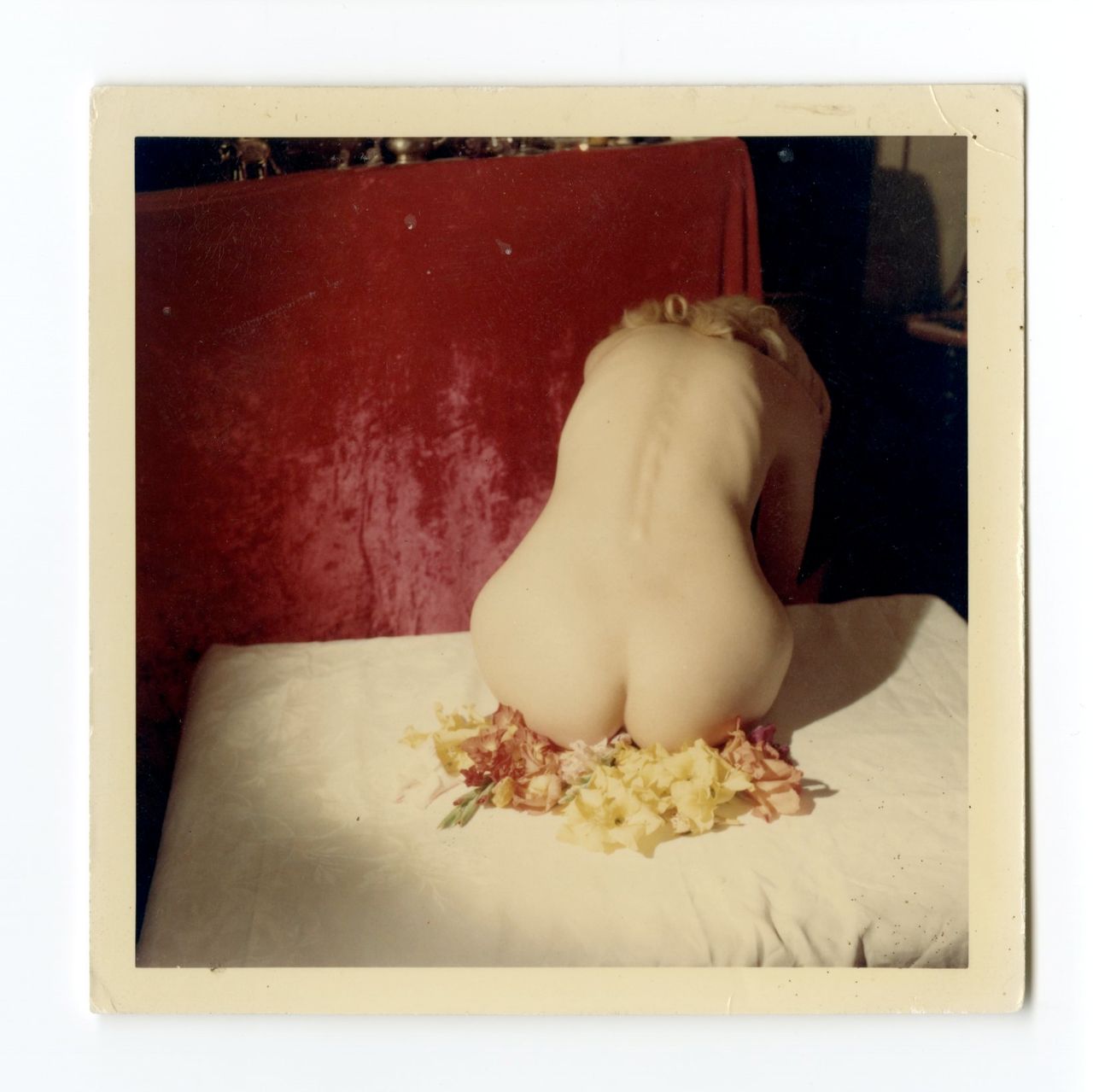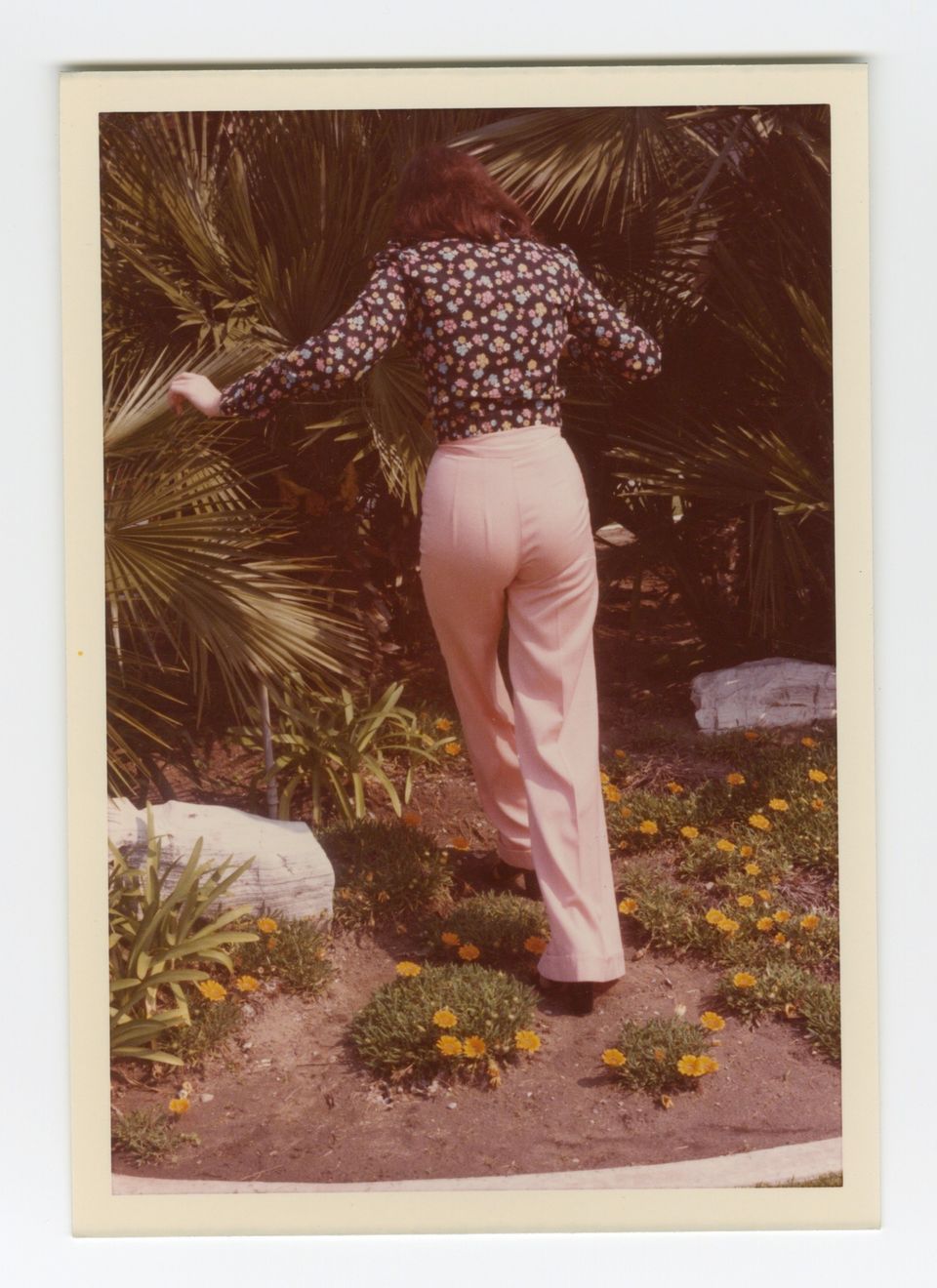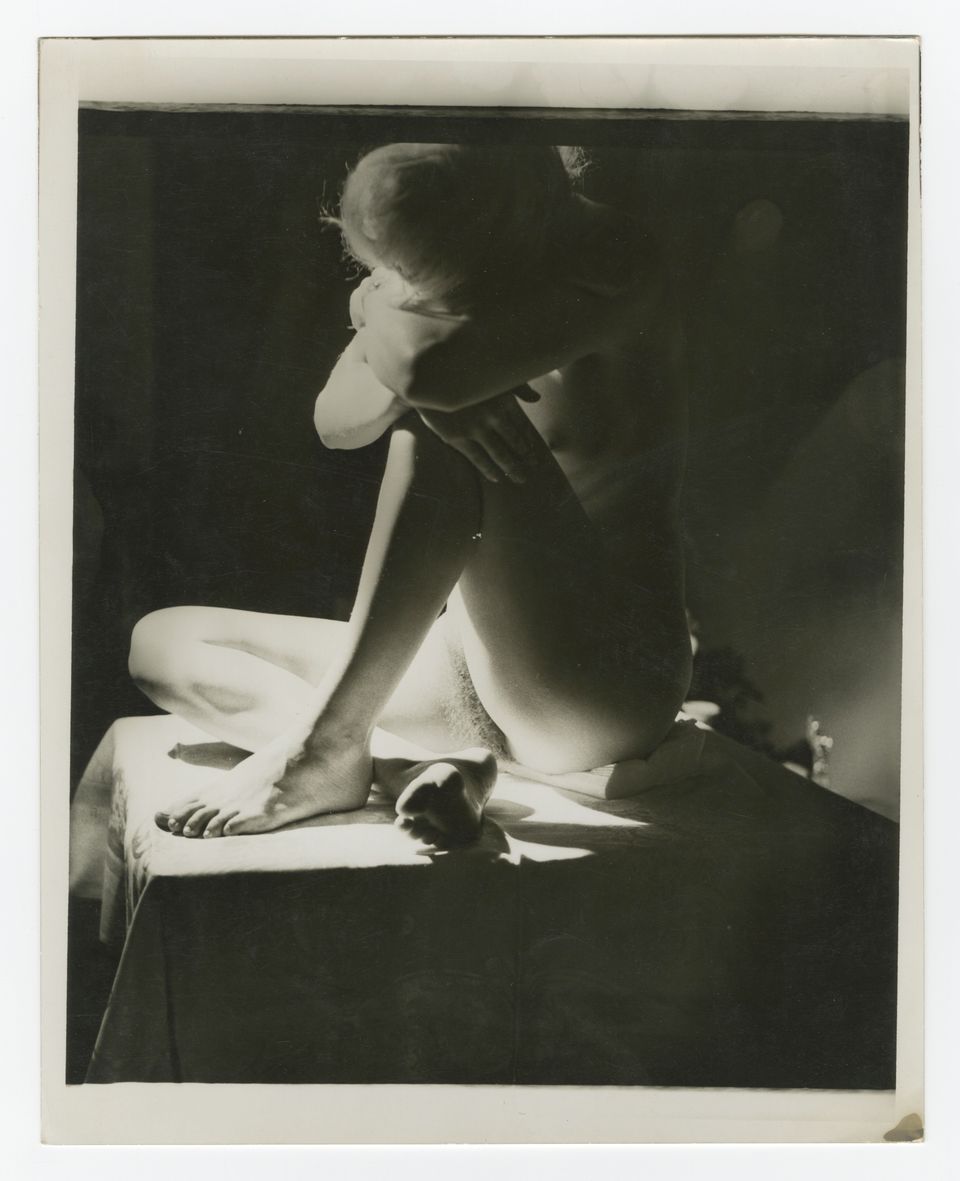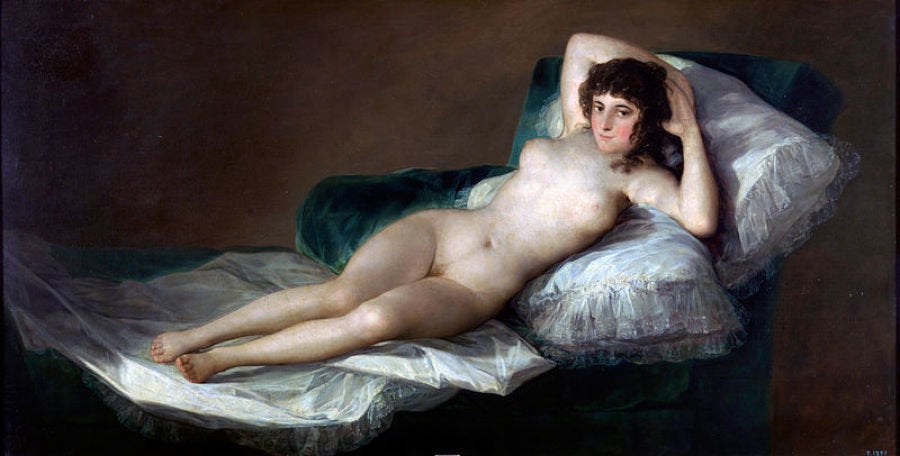Warning: This post contains lots of nudity and may be unsuitable for work.

In one of photographer John Kayser's untitled Polaroids, Kayser himself lies horizontally on the ground, his button-up shirt adorned with little blue cars. A pair of woman's legs loom over his upper half -- hairless, glowing, tucked into black stiletto pumps, one of which is pressing directly into his cheek.
It's the grown-up version of the middle school perv, lying down between the bleachers in the hopes of catching a glimpse up an unsuspecting cheerleader's skirt. There's a touch of '70s performance artist Vito Acconci -- famous for masturbating beneath the floorboards of a gallery, his panting breath wafting upwards -- mixed in, too.
Between 1960 and 1980, the mysterious man often referred to as John K. photographed hundreds of women -- passionately, dramatically, sometimes creepily. He photographed them posing nude, legs splayed open, amidst a cornucopia of harvest vegetables. He photographed them faceless, horizontal, on a bed, their pubic hair silver in the light. He photographed them fully clothed, too.

Not much is known about Kayser. He was born in North Dakota in 1922 and moved to Los Angeles as a child, where he spent the rest of his life. He served briefly in World War II as an armorer in the 18th Bomber Squad, and later worked for Northrup Aircraft Inc. in L.A., first in assembly and then as a technical illustrator. He studied briefly at the Art Center of Los Angeles and the Allied Art School in Glendale, California. He may have been married to a woman named Lilly
And, of course, he took pictures and made 8 mm films. He worked in a studio he created in his home, where he draped red velvet and other fabrics as a somewhat haphazard backdrop. In a stranger component of his collection of rarely seen images, naked women sit, back to the viewer, on a variety of random objects -- pies, cakes, bread, fish bowls, cats and Grecian vases -- their cheeks smushed against the systematically arbitrary goods.
Kayser's photographs, discovered after his death, epitomize the male gaze -- or, more specifically, the dirty old male gaze. Somewhere between outsider artist, amateur pornographer and Peeping Tom, Kayser exposes his own uncontrollable appetite with every exposed butt cheek before his lens. What are we to make of this camera-laden Humbert Humbert, who leaves behind so little clues aside from his glaring love of the female form?

Eric Kroll, a fetish photographer and collector of Kayser's work, has a theory: "I think these photos had a dual purpose for him: to paint from and to get off on, sexually. The work runs the gamut from classical nude to extremely intimate. But if the definition for pornography is gratuitous imagery to sell, then John wasn’t a pornographer. I can’t claim he didn’t feel there would be a certain immorality to his work (since he, as an old man, scribbled names and dates on the backs of his images taken years earlier), but I suspect the women never imagined their most private parts would grace a gallery wall."
For Max Farago, owner of Farago Gallery, the allure was in the quality of the images more than the content. "My first reaction was to the image, the composition, the color, the rhythm of the photographs," he explained. "And secondly was the eroticism, even though it's so present in the work. He took so much time to express his desires, directing the girls and creating the sets. It feels very all encompassing in a way you don't see of most guys at home living out their fantasies."
Farago compares Kayser's oeuvre to the work of outsider artist Miroslav Tichý, who constructed cameras out of cardboard tubes and tin cans to photograph unsuspecting women on the street. He also mentions formal similarities between Carlo Mollino, Christopher Williams and Paul Outerbridge.

Aside from the extravagant sets, and the slight shortcomings in execution that reveal Kayser as the amateur he was, Farago was intrigued by a certain repeated motif throughout the works -- no, not just naked butts. Farago noticed the recurrent theme of pressure, contact, touch. "There is always a woman sitting on something, or there's someone standing on his face, or cars driving over objects, himself under a car. There is always contact."
This predilection for touching and being touched is easily overshadowed by the preponderance of boobs and butts in Kayser's images. But it's this detail that perhaps best illuminates the motivation behind the works, a certain desire to be touched, held, even crushed.
By working his own image into the frame, often as a lifeless form to be stomped on or smushed, Kayser envisions his own weakness and actualizes his own humiliation. The images capture the full scope of lust, from fantasy to the desolate reality that often creeps back in.
Kayser is far from the first artist to devote his work to feminine beauty. He's also, probably, not alone in his amateur approach to fiendish documentation. Yet what sets him apart from the average voyeur is his willingness to turn the camera on himself, to let the red velvet curtain hang lopsided to the right, to expose the cracks and wrinkles in his fantasy and the humiliation he experiences, and perhaps desires, as a man.
"John K: Women" runs from January 29 until March 5, 2016, at Farago Gallery in L.A.









Also on HuffPost:
